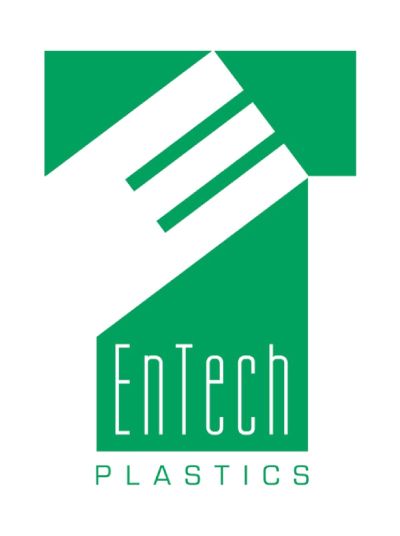Understanding Flame-Retardant Plastic Grades: Your Complete Engineering Guide
At EnTech Plastics, we understand that selecting the right flame-retardant plastic grade is critical for ensuring both safety and performance in your applications. Whether you're developing automotive components, electronic housings, or construction materials, the choice of flame-retardant plastic can make the difference between meeting regulatory standards and exceeding them.
Flame-retardant plastics have revolutionized manufacturing across industries where fire safety is non-negotiable. These specialized materials resist combustion and prevent fire spread, making them essential in automotive, electronics, construction, and aerospace applications. With various grades available, each offering distinct properties and capabilities, understanding your options is crucial for optimal material selection.
How Flame-Retardant Plastics Are Classified
Flame-retardant plastics encompass three primary classification systems based on mechanism of action, chemical composition, and fire-resistant properties:
Halogenated Flame Retardants
Halogenated flame retardants incorporate bromine and chlorine compounds that release halogen gases at high temperatures, effectively disrupting the combustion process. This category includes brominated flame retardants (BFRs) and chlorinated flame retardants (CFRs), which are particularly effective for achieving high flame resistance ratings.
Non-Halogenated Flame Retardants
Non-halogenated flame retardants offer eco-friendly alternatives without compromising performance. These compounds utilize mechanisms such as intumescence, creating protective char layers when exposed to heat. Phosphorous-based and nitrogen-based flame retardants are prime examples of this environmentally conscious approach.
Inorganic Flame Retardants
Mineral-based compounds like aluminum hydroxide and magnesium hydroxide form the foundation of inorganic flame retardants. When heated, these materials release water vapor that cools the surrounding environment and effectively suppresses fire propagation.
Essential Flame-Retardant Plastic Grades
Flame-retardants are categorized into grades to meet diverse application requirements and regulatory constraints:
- V-0 Flame Retardant Grade - The V-0 grade includes plastic resins which, according to UL94 standards, are materials that self-extinguish without dripping flaming particles. This grade is ideal for critical applications where maximum fire protection is required.
- V-1 and V-2 Flame Retardant Grades - Both grades comply with UL94 standards, with these materials self-extinguishing within 30 and 60 seconds, respectively. These grades often incorporate combinations of halogenated and non-halogenated flame retardants, providing excellent versatility for various applications.
- Low Smoke and Low Toxicity (LSLT) Grade - When smoke and toxic gas emissions are critical concerns, LSLT flame-retardant plastics become the preferred choice. These materials minimize harmful byproduct release during combustion, making them perfect for confined spaces, public transportation systems, and aerospace applications where occupant safety is number one.
- High-Temperature Flame Retardant Grade - Some demanding applications require flame-retardant plastics that maintain their fire-resistant properties at elevated temperatures. High-temperature grades utilize advanced flame-retardant technologies to ensure consistent performance even under extreme thermal conditions.
- Environmentally Friendly Flame Retardants - Eco-friendly grades utilize phosphorous-based or nitrogen-based flame retardants. These materials meet stringent regulatory requirements while minimizing environmental impact, perfect for companies committed to sustainable manufacturing practices.
Key Selection Criteria for Optimal Performance
When choosing flame-retardant plastic grades, consider these essential factors:
Regulatory Compliance: Ensure materials meet all relevant fire safety standards and industry regulations for your specific application.
Performance Requirements: Evaluate mechanical, thermal, and electrical properties to confirm alignment with your application demands.
Environmental Impact: Consider the environmental implications of your chosen flame retardant, especially for applications subject to strict sustainability guidelines.
Cost Effectiveness: Assess cost implications while maintaining quality standards and performance requirements.
Making the Right Choice for Your Application
Flame-retardant plastics offer diverse grades designed to meet specific engineering and regulatory requirements. Success depends on carefully evaluating factors such as flame resistance levels, smoke toxicity considerations, high-temperature performance, and environmental impact when selecting materials for your applications.
By partnering with EnTech Plastics, you can ensure access to expert guidance, premium materials, and comprehensive support throughout your material selection process. Our team understands that informed material choices lead to enhanced safety, regulatory compliance, and optimized product performance across all industries.
Ready to Find Your Perfect Flame-Retardant Plastic Solution?
Don't leave your fire safety requirements to chance. We can help you navigate the complex world of flame-retardant plastic grades and identify the perfect solution for your specific application.
Contact EnTech Plastics today to discuss your project requirements, request samples, or schedule a consultation with our team.
Be The First to Know!
Enjoying this article? Stay up to date and sign up now to get notified of new news and insights from EnTech Plastics.
